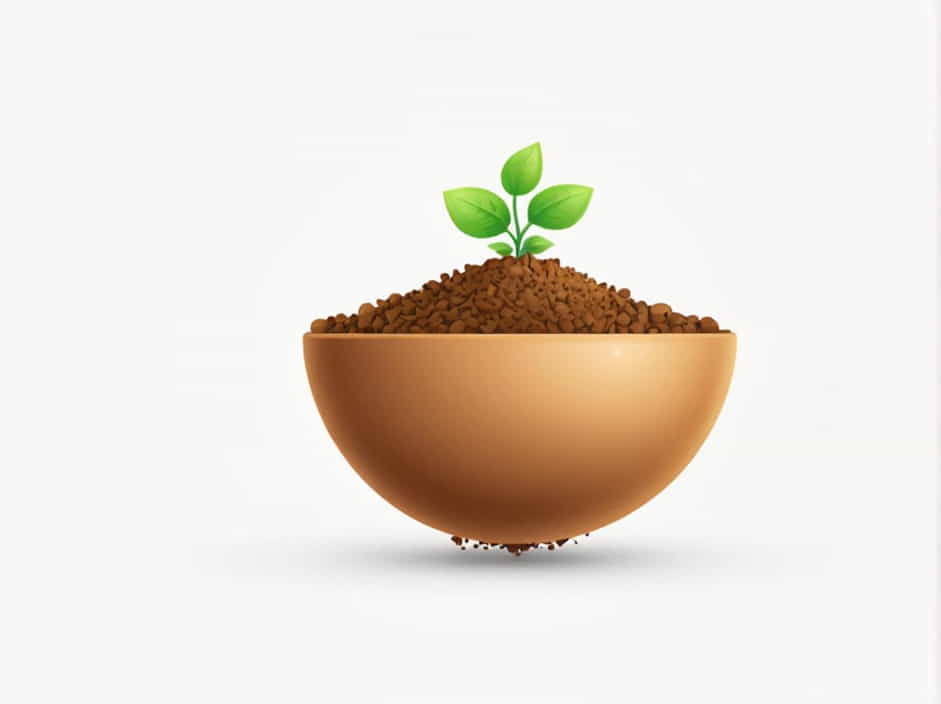Many people mistakenly believe that the uppermost layer of soil is called subsoil, but this is incorrect. In reality, the topmost layer of soil is known as topsoil, while subsoil lies beneath it. Understanding the different layers of soil is essential for agriculture, gardening, and environmental conservation.
This topic will explain the structure of soil layers, the role of subsoil and topsoil, and why this common misconception exists.
Understanding Soil Layers
Soil is divided into different layers, also known as horizons. These layers develop over time due to weathering, organic matter decomposition, and natural processes. The main layers of soil include:
- O-Horizon (Organic Layer) – Contains decomposed leaves, plants, and organic materials.
- A-Horizon (Topsoil) – The uppermost layer, rich in nutrients and essential for plant growth.
- B-Horizon (Subsoil) – Located beneath topsoil, containing minerals leached from above.
- C-Horizon (Parent Material) – Composed of weathered rock and sediment.
- R-Horizon (Bedrock) – The deepest layer, consisting of solid rock.
Now, let’s explore why topsoil is the actual uppermost layer, not subsoil.
What Is Topsoil?
1. Definition and Characteristics
Topsoil (A-Horizon) is the uppermost soil layer, typically 5 to 10 inches deep. It is rich in organic matter, providing the necessary nutrients for plant growth and microbial activity.
2. Importance of Topsoil
Topsoil plays a crucial role in agriculture and ecosystems due to its:
- High nutrient content – Supports plant roots and microbial life.
- Moisture retention – Helps plants absorb water efficiently.
- Aeration and drainage – Prevents waterlogging and root rot.
Without healthy topsoil, plants would struggle to grow, leading to poor crop yields and environmental degradation.
What Is Subsoil?
1. Definition and Characteristics
Subsoil (B-Horizon) lies directly beneath the topsoil and is usually denser, compacted, and lower in organic material. It contains minerals like iron, clay, and aluminum, which have leached down from topsoil.
2. Functions of Subsoil
Subsoil is essential for:
- Storing minerals and nutrients that gradually move to topsoil.
- Supporting plant roots for stability and deeper water access.
- Regulating water movement by filtering and storing moisture.
Unlike topsoil, subsoil is less fertile but still important for soil structure and plant health.
Why Do People Mistakenly Call the Uppermost Layer “Subsoil”?
1. Lack of Awareness
Many people are unfamiliar with soil science and assume that subsoil refers to any soil they see on the surface. In reality, subsoil is a deeper layer beneath the nutrient-rich topsoil.
2. Confusion with Soil Composition
Some soil types have thin topsoil layers, making subsoil more visible. This often leads to the incorrect assumption that subsoil is the uppermost layer.
3. Misinterpretation of Terminology
The prefix “sub-“ means “under” or “beneath.” However, people sometimes misunderstand the term and assume subsoil refers to the surface layer rather than the layer below topsoil.
The Impact of Soil Layers on Agriculture
1. Role of Topsoil in Farming
Topsoil is the most important layer for agriculture because it contains nutrients, organic matter, and microbes that support plant growth. Farmers focus on maintaining healthy topsoil through:
- Crop rotation to prevent nutrient depletion.
- Composting to enrich organic matter.
- Mulching to retain moisture and reduce erosion.
2. How Subsoil Affects Crops
Subsoil is less fertile but still crucial for root stability and water storage. However, poorly managed subsoil can create challenges such as:
- Compacted subsoil that restricts root growth.
- Low organic content, limiting plant nutrition.
- Water drainage issues, affecting plant health.
Soil Erosion and Its Effect on Soil Layers
1. Causes of Soil Erosion
Soil erosion occurs when wind, water, or human activity removes topsoil, exposing subsoil. The main causes include:
- Deforestation – Removing trees reduces root stability.
- Overgrazing – Livestock damage soil structure.
- Intensive farming – Excessive plowing weakens topsoil.
2. Consequences of Losing Topsoil
When topsoil is lost, plants struggle to grow, and soil fertility declines. Subsoil, which lacks organic material and nutrients, cannot support agriculture effectively.
3. Preventing Soil Erosion
To protect topsoil and subsoil, farmers and conservationists use methods like:
- Planting cover crops to prevent wind and water erosion.
- Terracing and contour farming to reduce runoff.
- Using organic matter to improve soil structure.
How to Improve Subsoil for Better Soil Health
While topsoil is crucial, improving subsoil quality can also benefit agriculture and ecosystems. Here are some effective methods:
1. Deep Tilling
Breaking up compacted subsoil allows better root penetration and water movement.
2. Adding Organic Matter
Incorporating compost, manure, or biochar enhances soil fertility and microbial activity.
3. Soil Aeration
Improving airflow in subsoil prevents waterlogging and promotes healthy root systems.
4. Growing Deep-Rooted Plants
Plants like alfalfa and clover help break up hard subsoil, making nutrients more accessible.
The uppermost layer of soil is called topsoil, not subsoil. This common misconception arises from lack of knowledge, thin topsoil layers, and terminology confusion.
Understanding the different soil layers, including topsoil and subsoil, is essential for agriculture, gardening, and environmental conservation. By preserving topsoil and improving subsoil, we can ensure healthy plant growth, sustainable farming, and better soil management for future generations.
